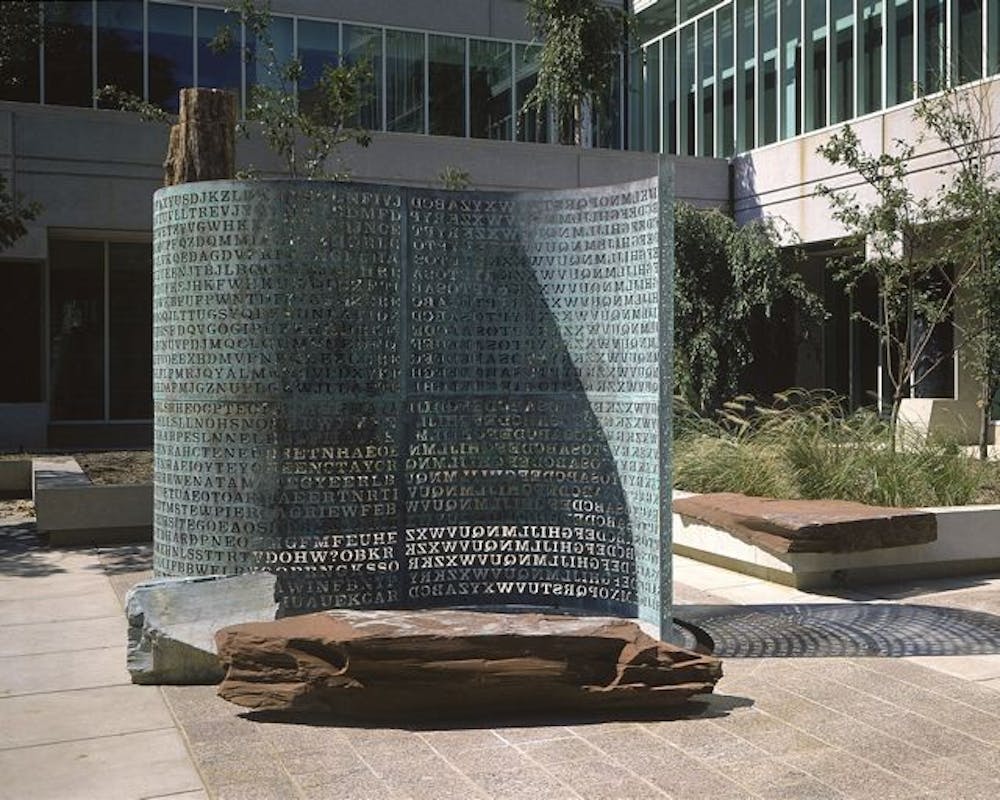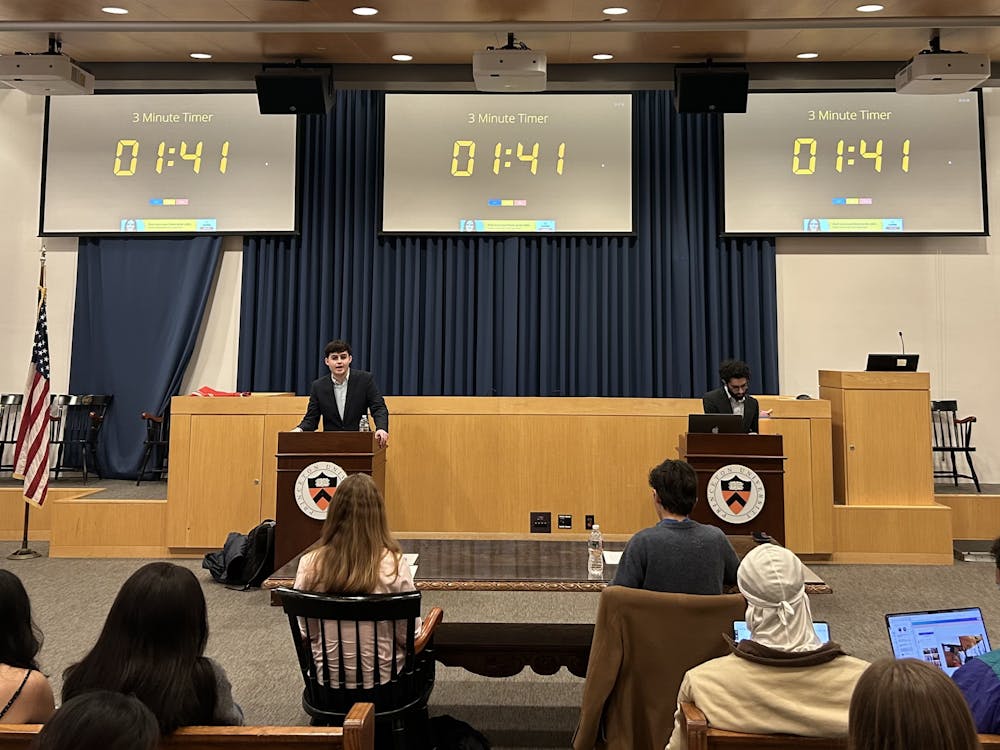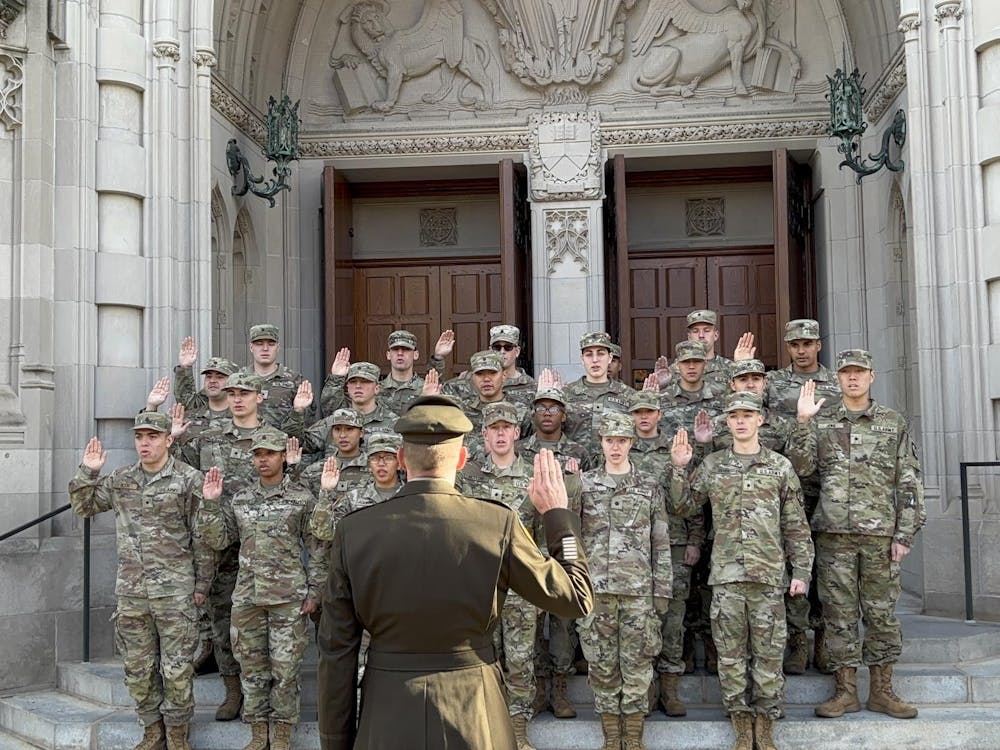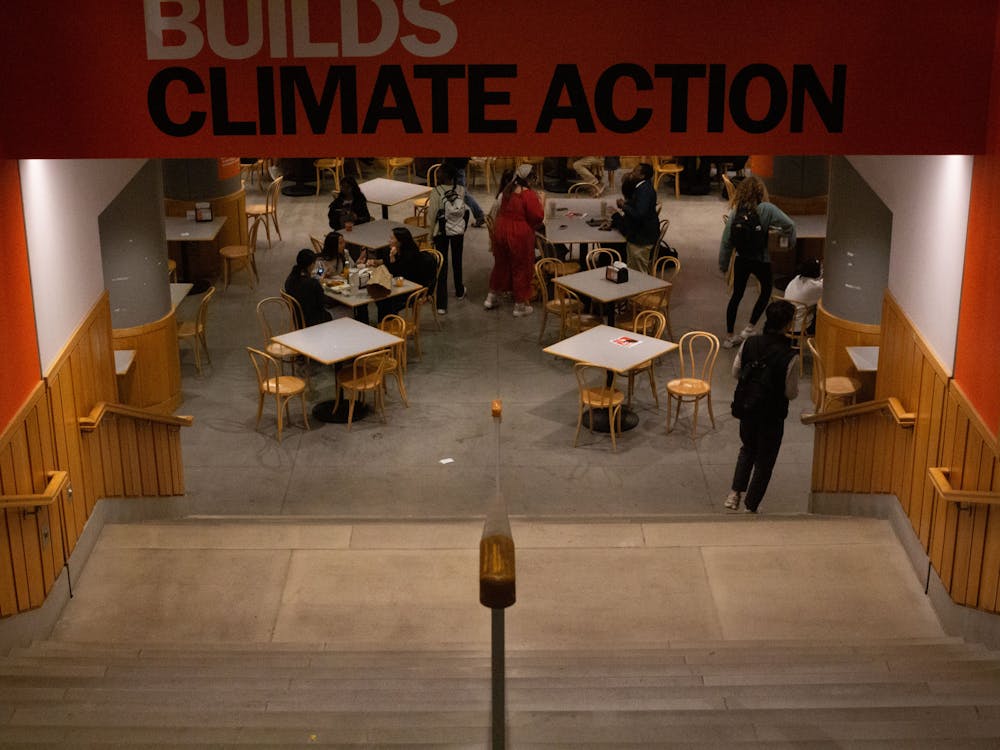On the evening of Friday, Oct. 12, acclaimed American sculptor Jim Sanborn delivered a lecture to a crowded audience of students and community members at the University's Art Museum. In his talk, Sanborn described much of his life’s work that, in his own words, seeks to “bring science and art closer together.”
The talk was particularly timely, given recent discussion on campus surrounding the controversial Art of Science exhibit displayed at the Friend Center. While some, including myself, have reacted to this exhibit by arguing that “there is no art of science,” others have claimed that differentiating these two pursuits is, for reasons often unclear, invalid.
On the surface, one might take Sanborn’s work as justification for the latter argument, that art and science are identical. Along these lines, the Student Advisory Board’s introduction to Sanborn claimed his work “seeks to soften the distinction between art and science.”
A deeper, more nuanced appreciation of Sanborn’s work suggests otherwise. Rather than eliminating the distinction between art and science, Sanborn’s pieces powerfully demonstrate how art and science can find inspiration from and inform one another in intriguing ways, while remaining distinct pursuits with disciplinary boundaries.
To see this, we can start with Sanborn’s most famous project: Kryptos. Completed in 1990, the sculpture is situated in the CIA’s headquarters and consists of four large copper plates, accentuated with petrified wood, quartz, granite, among other materials. The sculpture is best known, however, for the codes displayed on these materials: four separate encrypted messages, 869 characters in total, which contain riddles within riddles. To Sanborn’s amusement, these messages have fascinated cryptographers for years, and one plate’s puzzle remains unsolved to this day.
So how do we interpret Kryptos? Computer science as art? Not quite. True, these two elements co-exist in Sanborn’s work, but to equate them fails to do justice to the more complex relationship he creates between them. As Sanborn beautifully articulated in his talk, art and science are juxtaposed in Kryptos in a way that allows the latter to make insightful commentary about the former. Namely, his sculpture expresses the ambiguity and confusion inherent to the nascent discipline of computer science in the early 1990s. Additionally, the sculpture conveys a message about CIA employees, who must use computer science in their everyday work and experience Sanborn’s sculpture most often. Like those human beings, Sanborn explained in the talk, his sculpture “must keep a secret its whole life.”
These deeper meanings are subjective in origin and interpretation, making them more deserving of the classification of art than those technically-focused and objectively portrayed images presented by our campus’s “Art of Science” exhibit.
As a second example, we can look to Sanborn’s portrayal of “implied geometries” in nature. As Sanborn explained in his talk, these massive pieces involved overlying intense beams of light onto natural landscapes of vast proportion. With this light, the artist outlined Euclidean geometries he saw in hills, valleys, caverns, and mountains.
Once again, this represents not so much an equation of art and science as an intriguing juxtaposition of the two – in this case quite literally in the natural world, rather than in a museum or artificial settlement. Specifically, Sanborn’s drawings reveal what he calls the “pre-form” of the landscape, distilling what he sees into beautiful patterns that he creates. Unlike the images displayed in the “Art of Science” exhibit, this project demonstrates a subjective and humanistic interpretation of Nature, rather than an objective and uninterpreted replication of it.
The art-science distinction is critical to appreciating Sanborn’s message in this work. Imagine if a viewer looked at Sanborn’s lines through a scientific lens—for instance through the lens of cartography, whose practitioners “draw” lines on natural landscapes with the intention of gaining quantitative, objective insights. In doing so, one would profoundly misinterpret what Sanborn is trying to do.
Sanborn is emphatically not trying to yield experimental cartographical data about his subject. Rather, he is communicating his own subjective interpretation of a scene’s most meaningful qualities. His project is far more aesthetically insightful than, say, depictions of molecular structures, whose primary purpose is scientific communication rather than artistic appreciation, a subtle distinction understandably misunderstood by some.
As a final example, we may turn to Sanborn’s Atomic Time: Pure Science and Seduction. In this piece, as its name suggests, Sanborn gathers nuclear technologies scientists employed to create the atomic bomb to recreate a hypothetical nuclear bomb laboratory. A powerful artistic depiction of the scientific process, certainly, but not science itself. Sanborn, as he described himself, acted in this project as a “curator of objects,” arranging the technologies of the Manhattan project in very particular way that was both historically accurate and aesthetically pleasing.

While the scientists whose workplace Sanborn depicts did pursue scientific understanding about how to construct an atomic bomb, the purpose of the artist decades later is fundamentally different. Namely, he seeks to capture what he calls the “inherent beauty” that exists in physics, but is not reducible to or provable by equations and experiments. Articulating that beauty required an artistic, rather than scientific, epistemology.
Jim Sanborn shows us that art and science, while distinct pursuits, often relate in intensely enriching and informative ways.
Gabe Lipkowitz is a senior concentrator in molecular biology. He can be reached at gel@princeton.edu.








